 John Hetrick’s invention was the first prototype of today’s modern air bags and derived from an accident on a Sunday afternoon drive. In the spring of 1952, Hetrick, his wife and daughter went for a car ride in their 1948 Chrysler Windsor. The car veered into a ditch on the side of the road to avoid an on-road collision.
John Hetrick’s invention was the first prototype of today’s modern air bags and derived from an accident on a Sunday afternoon drive. In the spring of 1952, Hetrick, his wife and daughter went for a car ride in their 1948 Chrysler Windsor. The car veered into a ditch on the side of the road to avoid an on-road collision.
Hetrick recalled “As I applied the brakes, both my wife and I threw our hands up to keep our daughter from hitting the dashboard … during the ride home, I couldn’t stop thinking about the accident. I asked myself: ‘Why couldn’t some object come out to stop you from striking the inside of the car?'”
As a retired industrial engineer technician, Hetrick was concerned that there was not a device in the car to cushion the impact of an accident between the vehicle’s interior and the passengers. Hetrick used his experience working with the Navy to create a safety device for vehicles. He received U.S. patent 2,649,311 for “safety cushion assembly for automotive vehicles” on August 18, 1953.
German inventor, Walter Linderer received German patent 896,312 on November 12, 1953. Linderer’s system involved a compressed air system, which was released by the driver or bumper contact. Later research concluded that compressed air could not expand and fill the bag fast enough for maximum safety.
Continue reading “More Than Air – Invention of the Air Bag”


 In 1966, scientists at NASA developed a open cell polyurethane-silicon plastic to improve the safety of seat cushions on spacecraft and to lessen the impact of landing. The soft cushion material wants to maintain it’s original form and structure when it is compressed. Even after being compressed to 10% of it sizes, the foam will return to its original shape and size which is why it is called memory foam.
In 1966, scientists at NASA developed a open cell polyurethane-silicon plastic to improve the safety of seat cushions on spacecraft and to lessen the impact of landing. The soft cushion material wants to maintain it’s original form and structure when it is compressed. Even after being compressed to 10% of it sizes, the foam will return to its original shape and size which is why it is called memory foam.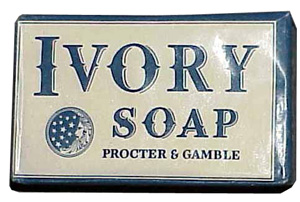 To better compete within the soap industry, Proctor & Gamble sought to create a high quality, affordable, duel bath bar and laundry product. In 1878, the first successful formula was created and produced under the name of White Soap.
To better compete within the soap industry, Proctor & Gamble sought to create a high quality, affordable, duel bath bar and laundry product. In 1878, the first successful formula was created and produced under the name of White Soap.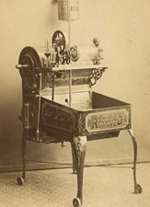 The history of popcorn making and corn popping machines have seen much improvement. Advancements have allowed us to efficiently pop our favorite snack just in time for that movie. In the past, many methods had been executed to pop corn as a treat. One simple way was placing kernels over a fire on a hot rock. As the impact of the heat increased on the kernels, they would pop in different directions. People would chase after the pieces in order catch and enjoy the taste of this snack. Sadly, many of the corn kernels were charred. Luckily, there are easier ways to obtain this delightful goody and it began with the world’s first commercial popcorn machine.
The history of popcorn making and corn popping machines have seen much improvement. Advancements have allowed us to efficiently pop our favorite snack just in time for that movie. In the past, many methods had been executed to pop corn as a treat. One simple way was placing kernels over a fire on a hot rock. As the impact of the heat increased on the kernels, they would pop in different directions. People would chase after the pieces in order catch and enjoy the taste of this snack. Sadly, many of the corn kernels were charred. Luckily, there are easier ways to obtain this delightful goody and it began with the world’s first commercial popcorn machine. In 1920, a candy maker in Youngstown, Ohio created a recipe for coating ice cream with chocolate. Harry Burt’s smooth chocolate coated ice cream treats were delicious. The first taste tester was his daughter Ruth who loved the flavor but hated the mess. Earlier, Burt had invented a lollipop on a stick known as a Jolly Boy Sucker. Taking the advice of his son, Harry Jr., Burt froze the same stick into his ice cream, creating handles for the treats. Burt named his new ice cream invention the Good Humor Bar. The name came from the belief that a person’s humor or temperament came from their sense of taste.
In 1920, a candy maker in Youngstown, Ohio created a recipe for coating ice cream with chocolate. Harry Burt’s smooth chocolate coated ice cream treats were delicious. The first taste tester was his daughter Ruth who loved the flavor but hated the mess. Earlier, Burt had invented a lollipop on a stick known as a Jolly Boy Sucker. Taking the advice of his son, Harry Jr., Burt froze the same stick into his ice cream, creating handles for the treats. Burt named his new ice cream invention the Good Humor Bar. The name came from the belief that a person’s humor or temperament came from their sense of taste.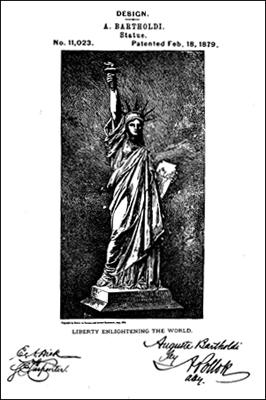 Did you know the subject of America’s most famous design patent wasn’t actually designed by an American?
Did you know the subject of America’s most famous design patent wasn’t actually designed by an American?
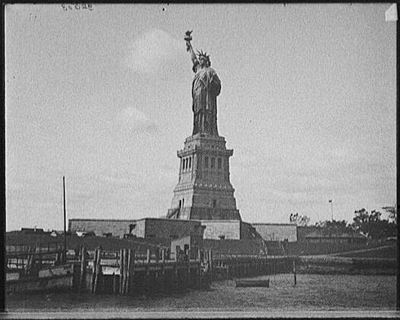
 You can add Super Glue to your list of inventions that were discovered by accident. Dr. Harry Coover was not trying to invent a super-sticky substance when he came across Super Glue. In 1945, Dr. Coover was actually working on a way to create a clear plastic to use in precision gunsights for Eastman Kodak.
You can add Super Glue to your list of inventions that were discovered by accident. Dr. Harry Coover was not trying to invent a super-sticky substance when he came across Super Glue. In 1945, Dr. Coover was actually working on a way to create a clear plastic to use in precision gunsights for Eastman Kodak.
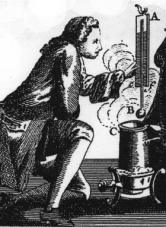 In 1593, when Galileo Galilei invented a basic water thermometer the device was called a thermoscope. His thermoscope and the ones that followed were not standardized in the liquid or the scale for telling the temperature. These simple devices mainly indicated a temperature increase or decrease, but no one was sure by how much. Daniel Gabriel Fahrenheit was a German physicist who changed the way the world viewed temperature.
In 1593, when Galileo Galilei invented a basic water thermometer the device was called a thermoscope. His thermoscope and the ones that followed were not standardized in the liquid or the scale for telling the temperature. These simple devices mainly indicated a temperature increase or decrease, but no one was sure by how much. Daniel Gabriel Fahrenheit was a German physicist who changed the way the world viewed temperature.